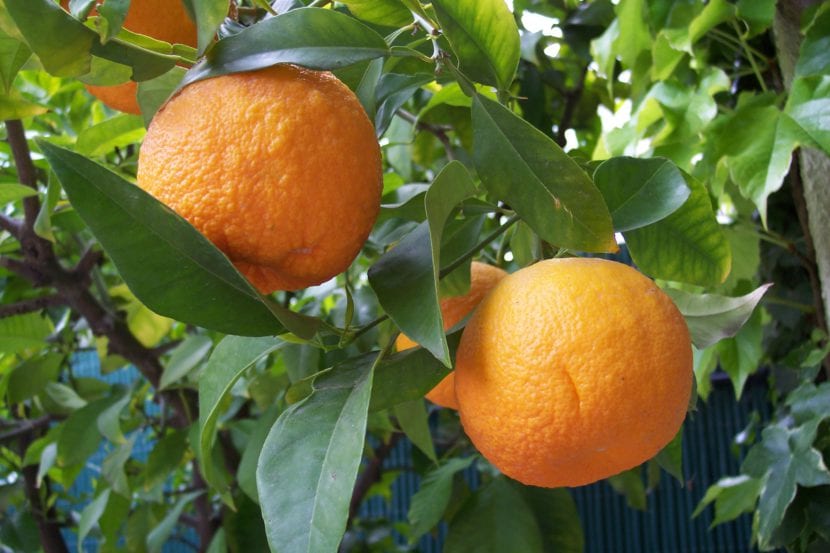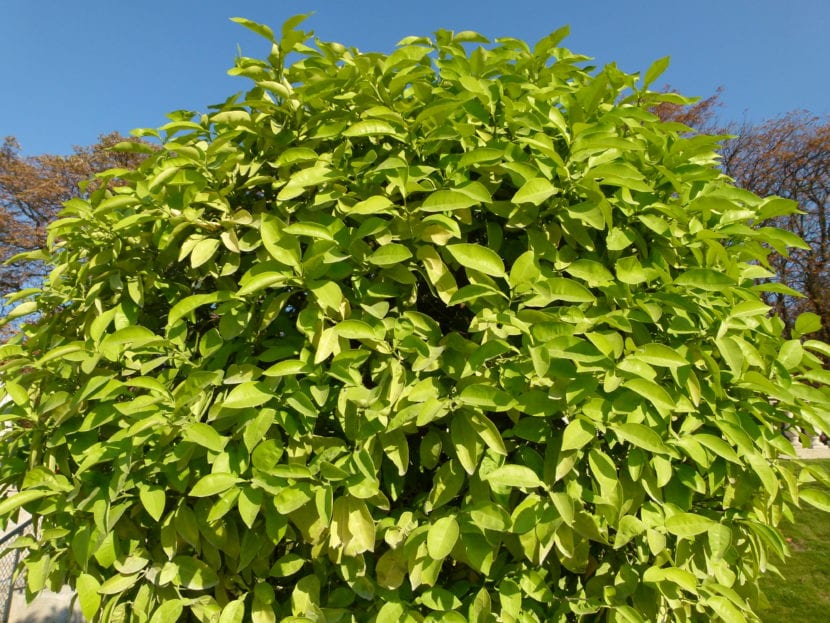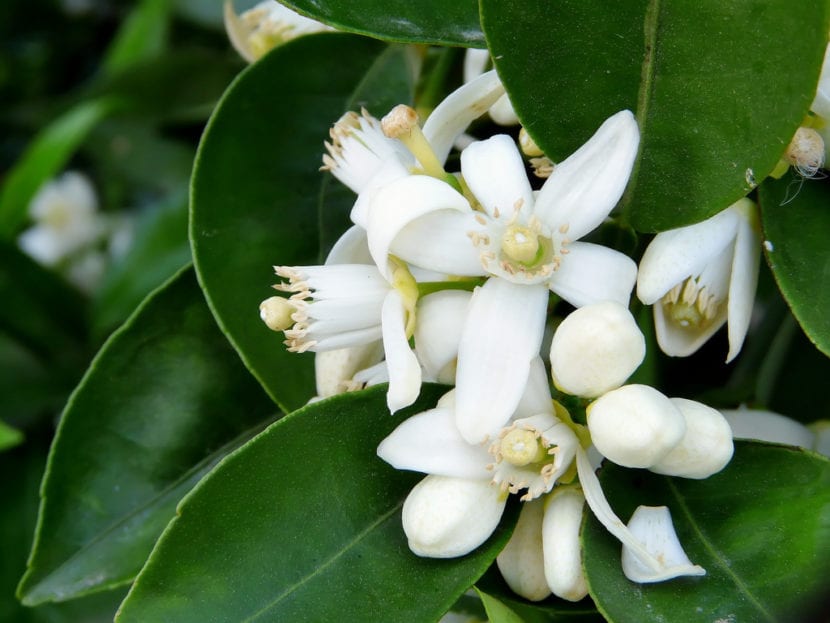
The orange trees They are some of the fruit trees that are most cultivated in orchards: their beautiful white flowers, their long dark green leaves, their size, and of course, their delicious fruits make them incredible plants. And it is that, in addition, a single specimen produces so many oranges that it can feed a family without having to acquire more.
But I am not going to deceive you, for that it is necessary to provide them with a series of cares so that the harvest is excellent. Would you like to know which ones are they?

Orange trees are evergreen fruit trees whose scientific name is Citrus. They are native to China and Indochina, and grow to a height of about 7 meters, although if the care is really good and they are not pruned, it can exceed 9m. To have them perfect, it is recommended to grow them in a warm climate, where the minimum temperature is -4ºC or higher, and provide them with the following care:
- Location: full sun. They must be placed in an area protected from the winds, especially from the saline ones.
- Soil or substrate: they grow without problems in clay soils. But if we have them in pots we have to use substrates that have good drainage, such as 60% mulch or compost + 30% perlite + 10% volcanic clay (to put as the first layer, inside the pot).
- Irrigation: frequent in spring and summer. It is recommended to water every 3-4 days, soaking the soil well.
- Subscriber: it is very important to pay them. We will use organic fertilizers, such as sheep manure or bat or penguin guano. It is also very interesting to fertilize with seaweed extract fertilizer for its richness in nutrients, but it should not be abused since it is very alkaline.
- Pruning: every 3-4 years, towards the end of winter, cleaning the center of the trees.
- Pests: leaf miners, mealybugs, spider mites and whiteflies. To prevent them, during autumn-winter it can be treated with insecticidal oil, and during the rest of the year with Neem Oil or paraffin oil.
- Management: they can be infected by fungi such as Phytophthora, or by viruses or similar, such as the sadness virus or psoriasis. To avoid them, you have to avoid overwatering, and do preventive treatments during spring and autumn with natural fungicides, such as copper or sulfur (if you have pets, keep them away from them as they are toxic products for them).

Take care of your orange trees by following these tips, and enjoy an excellent harvest 🙂.
How would be the pruning of the orange tree. It gives me very small flowers and fruits, but they end up falling and I have it like 5 years ago. I do not know if I leave 3 branches and as it says to remove the ones from the center.
Hello Lola.
Yes, you have to prune it, leaving the cup rounded or semi-spherical. You also have to remove the shoots that come out of the trunk or its base.
If you have questions, contact us.
Greetings.
Hello, I have a potted orange tree that they gave me last August.
This end of the year we ate the few oranges that were left on the branch (6 or 7, because so many others were bursting before ripening and we removed them from the branches) and they were quite tasty.
As the pot seemed small, we changed it at the end of February because it seemed that the flowers were about to come out and we did not want to catch it half-blooming.
The fact is that it bloomed well, but immediately the petals began to fall, even some buttons. And other flowers are left on the branch but they are wilting. There are more buttons that appear to have stopped their budding and the leaves seem to twist.
I do not know if it is due to the sudden changes in temperature that we are experiencing or is it that I am doing something wrong. I water it every two days and it is more or less protected from the wind (although we are in a high area in the southeast of Madrid and it blows a lot) and it gets plenty of sun from mid-morning until sunset.
Also before transplanting there were black spots on some leaves and I sprayed it with a little lizard soap dissolved in water, it seemed to have healed, although I have seen some again on leaves and I think also on flowers.
Shall I re-spray the soap? Am I watering you little?
Hello M. Carmen.
The spots are usually caused by fungi. You say that you are in Madrid, as now in Spain you cannot go out except if it is not by force majeure, if you have copper or powdered sulfur, or cinnamon, sprinkle a little on top of the leaves.
Regarding irrigation, it is true that the wind dries the substrate a lot and quickly, but today one irrigation every two days can be a lot. Insert a thin stick to the bottom, and if you see that when you remove it, it comes out with a lot of adhering soil, do not water. Another way to check the humidity is by weighing the pot once it has been watered and again after a few days.
Personally, I recommend watering every 3-4 or even 5 days. In summer you have to increase the frequency, watering 3 or 4 times a week.
If you have any doubts, please contact us.
Regards!
Hello, my orange tree has some black bugs and some wrinkled leaves. The fruit has already come out, what can I do? To prevent, how often do I add copper and sulfur? Thanks greetings!
Hello lili.
You can throw him potassium soap o diatomaceous earth. Both are ecological products, non-toxic neither for plants nor for people (only for insects that quickly become pests).
Copper O sulfur (you never have to mix them) you can add them in spring, autumn and winter, every 15 days.
Regards!
Is it bad that the irrigation of the grass reaches the leaves of the orange tree?
Hello Maria Teresa.
Depends. If at that time it is in direct sunlight, the leaves can burn as the magnifying glass effect occurs.
Greetings.